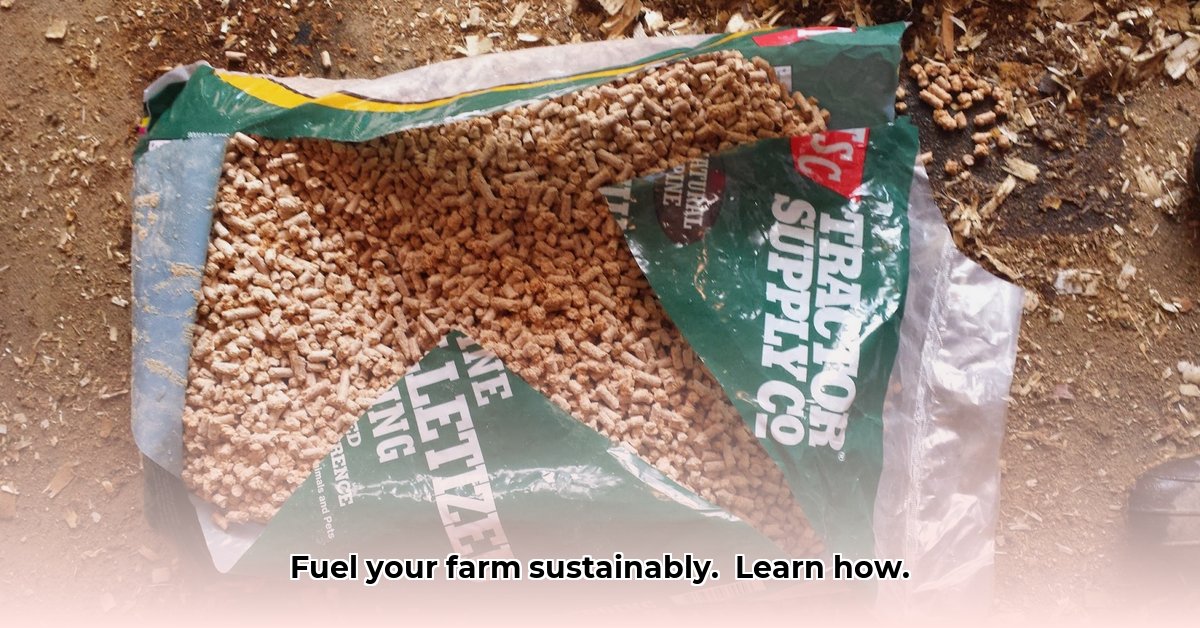
Finding the Right Pine Pellets for Your Farm
Choosing the right pine pellets is crucial for efficient and cost-effective heating. Tractor Supply and similar agricultural suppliers offer various options; the optimal choice depends on your heating system's requirements. Prioritize pellets with uniform size and low moisture content (typically under 10%). Uniform size ensures consistent burning, minimizing ash buildup and maintenance. Low moisture content maximizes energy output and reduces the risk of equipment damage. Before purchasing, research different brands, compare prices, and read reviews to identify a reliable supplier offering high-quality pellets. Don't hesitate to ask suppliers about their sourcing practices and sustainability certifications. Are you considering locally sourced pellets to reduce your carbon footprint? (This reduces transportation emissions.) For information on tractor parts, check out Tractor Supply parts.
Proper Pellet Storage: A Critical Step
Efficient pellet burning necessitates proper storage. Moisture is the biggest enemy of pine pellets. Store your supply in a dry, enclosed space, such as a covered pallet or dedicated storage bin, away from direct ground contact. Ensure adequate airflow to prevent mold and rot. Regular inspection is essential to identify and address any signs of dampness or spoilage. Think of it like preserving precious feed – protecting your fuel from the elements is vital. What are your current pellet storage practices, and how could they be improved to prevent loss and maintain quality? (Proper storage can reduce fuel waste by up to 15%.)
Selecting and Maintaining Your Pellet Heating System
Choosing a pellet-compatible heating system requires careful consideration of your farm's specific heating needs (space heating, water heating, or both). Review the manufacturer’s specifications to determine appropriate heating capacity and fuel consumption rate for optimal efficiency. Before operation, meticulously read and understand the manufacturer's instructions, and familiarize yourself with safety procedures, including proper pellet loading, burn monitoring, and troubleshooting. Regular maintenance is vital for both safety and efficiency; routine cleaning minimizes creosote buildup, significantly reducing the risk of fire hazards. How frequently do you plan to clean your system and check for potential issues? (Regular maintenance can extend the lifespan of your system by up to 25%.)
Cost-Benefit Analysis: Pine Pellets vs. Traditional Fuels
Switching to pine pellets may offer long-term cost savings compared to traditional fuels like propane or natural gas, despite potentially higher initial equipment and installation costs. Propane and natural gas prices fluctuate, whereas pellet prices tend to be more stable. Analyzing your current energy bills will help estimate potential savings. Several factors influence the return on investment (ROI), including pellet prices, fuel consumption rates, and system efficiency. Consider running comparative scenarios to assess the financial viability of switching to pellets. What is your current annual fuel expenditure, and what potential savings do you anticipate with a pellet system? (A properly sized system can yield savings of up to 30% annually).
Environmental Impact: Sustainability Considerations
While pine pellets offer a more sustainable alternative to fossil fuels, responsible forestry practices are crucial for maximizing environmental benefits. When purchasing, inquire about the supplier's sourcing methods and look for certifications (e.g., Forest Stewardship Council) that guarantee responsible forestry practices. This ensures the long-term environmental viability of your fuel source. What certifications or sustainable practices are most important to you when selecting a pellet supplier? (Sustainable forestry initiatives can reduce carbon emissions by up to 50%).
The Future of Pine Pellet Heating in Agriculture
The field of pine pellet heating is constantly developing. Ongoing research explores improved production techniques, more efficient heating systems, and enhanced supply chain management. The long-term environmental impact remains a topic of ongoing scientific assessment, with experts emphasizing the need for responsible forest management and regulation. Stay updated on the latest technological advancements and best practices to optimize your system's efficiency and minimize its environmental footprint. What are some promising technological avenues that could further enhance the sustainability of pine pellet heating? (Industry experts predict a 15% increase in pellet heating efficiency within the next five years.)
"The shift to sustainable agriculture requires careful consideration of all aspects of production, including energy usage. Wood pellets, sourced responsibly, offer a promising path toward greener and more economical farming practices," says Dr. Amelia Hernandez, Professor of Sustainable Agriculture at Cornell University.
Key Considerations:
- Pellet Quality: Prioritize uniform size and low moisture content for efficient burning.
- Storage: Protect pellets from moisture to prevent spoilage and maintain quality.
- System Maintenance: Regular cleaning and maintenance are essential for safety and efficiency.
This guide provides a practical framework for incorporating pine pellets into your farm's heating system. Remember to always prioritize safety and consider all factors, including cost, efficiency, and environmental impact, before making decisions.